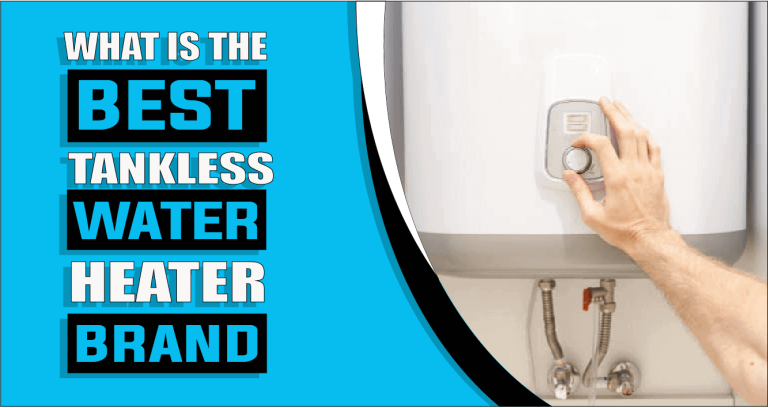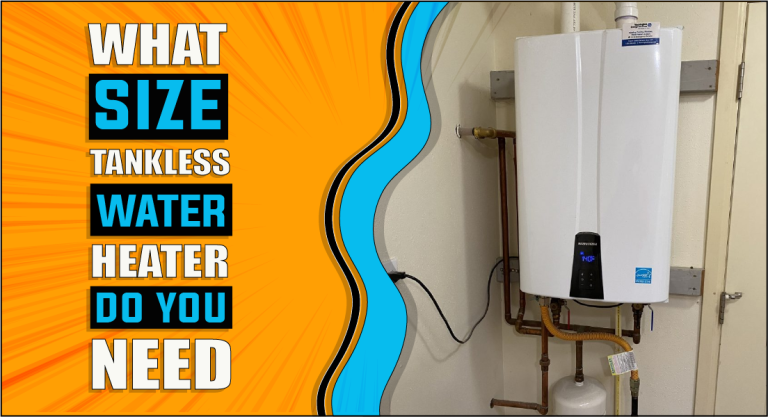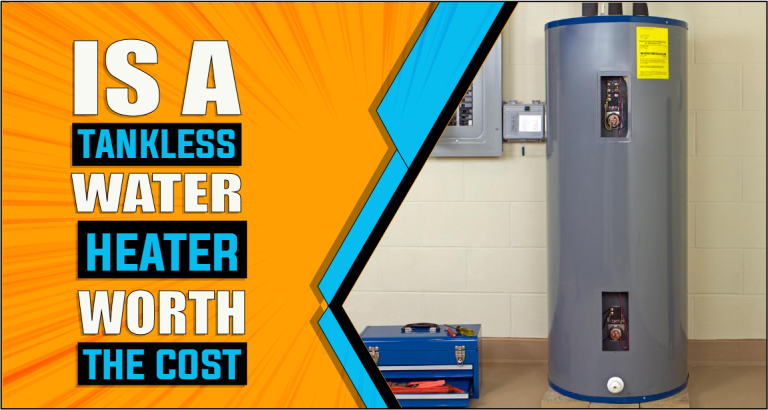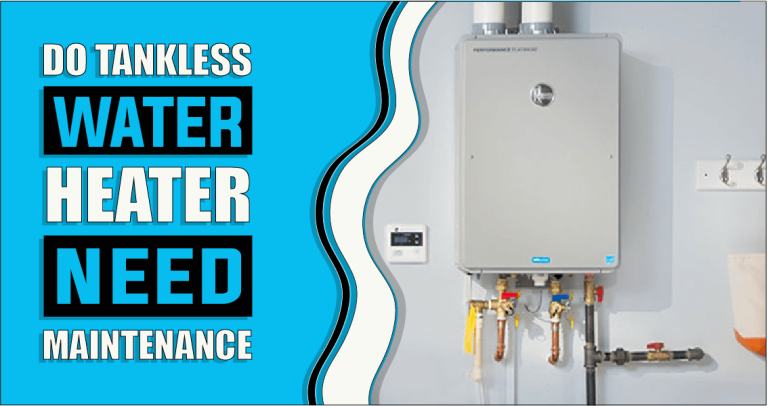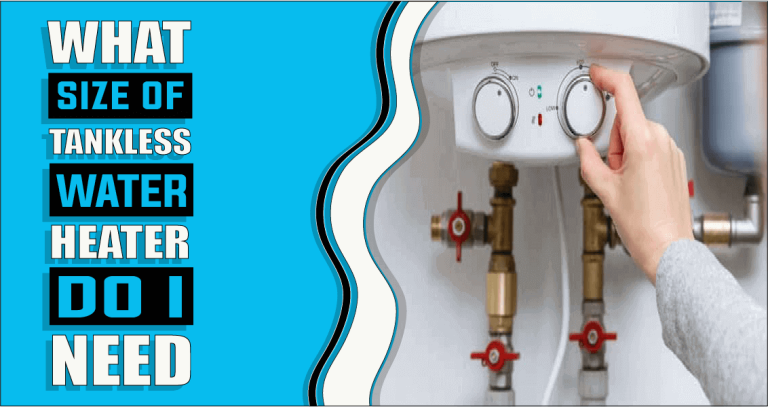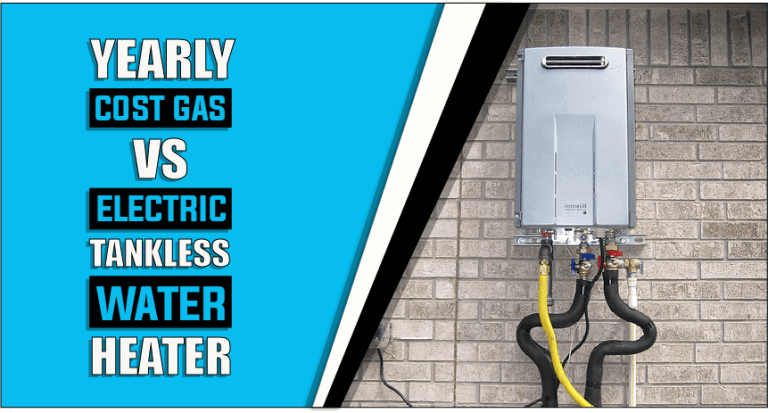Why Is Hot Water Heater Leaking From Drain Valve | Diagnosing The Drip
Are you experiencing a water heater leakage and don’t know why the water heater is leaking from the drain valve? This can be a frustrating and concerning problem that requires immediate attention. A leaking drain valve can lead to water damage, increased utility bills, and potential safety hazards. Understanding why this issue occurs is crucial in finding a solution. There are several reasons for a water heater leaking from the drain valve. It could be due to a faulty or worn-out valve, excessive pressure within the tank, sediment buildup, or a defective temperature and pressure relief valve.
Additionally, corrosion or damage to the tank itself may cause leakage. Addressing this issue promptly is essential to prevent further damage and ensure your water heater operates efficiently. To help you understand why hot water leaks from the drain valve, we’re here with the significant reasons for this event. Moreover, we will also explore effective solutions and preventive measures to help you resolve this problem and maintain a reliable hot water supply. Stay tuned for expert advice and practical tips on repairing a leaking drain valve and ensuring the longevity of your water heater!
Top 8 reasons why hot water is leaking from drain valve
Hot water leaking from a drain valve can indicate several issues with your water heater system. Here are the top 8 reasons why this might be happening:
1: Valve Wear and Tear (Worn Valve Seals) –
One of the most common reasons for hot water leakage from a water heater’s drain valve is wear and tear on the valve seals. The valve has rubber or plastic seals that provide a tight seal when the valve is closed.
With time, these seals can degrade as the valve is used for maintenance tasks such as flushing the tank. When the seals deteriorate, they no longer create an effective barrier, allowing hot water to slowly seep out of the valve.
This slow leak may not be immediately noticeable but can result in energy inefficiency and water wastage over time. If you observe a constant drip from the drain valve even when closed, worn valve seals are a likely culprit. Replacing the valve or its seals is typically necessary to resolve this issue.
2: Sediment Buildup –
Another common cause of hot water leakage from the drain valve is sediment buildup within the water heater’s tank. With time, water naturally contains minerals and debris that settle at the bottom of the tank. If the drain valve is located near the tank’s base, this sediment can partially obstruct it.
When you open the valve for tasks like flushing the tank, the accumulated sediment can interfere with the valve’s ability to seal when closed fully. As a result, a slow and persistent hot water leak can occur.
In addition, this situation is particularly common in areas with hard water, where mineral deposits accumulate more rapidly. To address this issue, the tank should be periodically flushed to remove sediment, and the drain valve may need cleaning or replacement if it is significantly clogged.
3: Corrosion –
Corrosion can significantly affect various water heater components, including the drain valve. Typically, water heaters are equipped with a sacrificial anode rod that helps prevent corrosion within the tank.
However, when this anode rod becomes depleted, the tank and its components, including the valve, become more susceptible to corrosion.
Corrosion can lead to the development of small holes or cracks in the valve, resulting in hot water leakage. This issue tends to worsen gradually over time if not addressed promptly.
To resolve a drain valve leak caused by corrosion, it’s essential to inspect the valve and, if necessary, replace it. Additionally, addressing the anode rod’s condition is vital to prevent further corrosion-related issues in the tank.
4: Excessive Pressure –
Excessive water pressure within a plumbing system can contribute to hot water leakage from the drain valve. Water heaters are designed to operate within a specific pressure range, and if the water pressure exceeds these limits, it can strain the components, including the drain valve.
High water pressure can prevent the valve from sealing tightly when closed, leading to hot water escaping through the valve.
This issue is particularly common in areas with erratic water pressure or when a pressure-reducing valve (PRV) is not installed in the plumbing system.
To address this problem, you may need to install a PRV to regulate water pressure or inspect and replace the drain valve if it has been damaged due to excessive pressure.
5: Faulty Temperature and Pressure Relief (TPR) Valve –
The Temperature and Pressure Relief (TPR) valve is a crucial safety component in a water heater. It is designed to release excess pressure or temperature from the water heater tank to prevent catastrophic failures. However, if the TPR valve malfunctions, hot water can be discharged from the valve, which may be mistaken for a drain valve issue.
TPR valve problems can occur for various reasons, including a faulty valve, improper installation, or issues with temperature and pressure settings. It’s essential to regularly check the TPR valve for proper operation and replace it if it is malfunctioning.
6: Loose or Improperly Sealed Valve –
Sometimes, hot water leakage from the drain valve can be attributed to a simple issue: the valve is loose or improperly sealed. The valve may not have been correctly sealed or secured during installation, maintenance, or previous usage. As a result, hot water can escape through gaps or openings around the valve.
This issue is often straightforward to address. Simply tightening or resealing the valve correctly can prevent the hot water leak. Ensuring the valve is properly seated and sealed is essential to avoid unnecessary water and energy wastage.
7: Age of the Water Heater –
The age of the water heater itself can be a contributing factor to hot water leakage from the drain valve. Water heaters have a finite lifespan, typically ranging from 10 to 15 years, depending on the type and quality of the unit. As a water heater ages, its internal components, including the drain valve, can deteriorate.
Over time, exposure to hot water and minerals in the water supply can cause corrosion and wear in the valve. This can lead to valve seals losing effectiveness, small leaks developing, or the valve becoming more susceptible to damage.
In some cases, older water heaters may develop structural issues that affect the integrity of the drain valve. Suppose your water heater is approaching or has exceeded its expected lifespan, and you experience hot water leakage from the drain valve. In that case, it may indicate that the water heater’s valve or other components are deteriorating due to age.
In these cases, it is often advisable to consider replacing the entire water heater to avoid further issues and improve efficiency and safety.
8: Manufacturing Defects or Damage –
In rare cases, hot water leakage from the drain valve can be attributed to manufacturing defects or physical damage to the valve.
Manufacturing defects may involve issues with the valve’s construction, such as poor-quality materials or faulty seals. These defects can lead to immediate or early failure of the valve.
Physical damage to the drain valve can occur during installation, maintenance, or due to external factors.
A valve that has been bumped, hit, or otherwise physically damaged may not seal properly, allowing hot water to leak out. Additionally, overtightening or improper handling during installation can damage the valve threads or components.
If hot water leakage from the drain valve occurs shortly after installation or maintenance, or if there is evidence of physical damage to the valve, it’s essential to address the issue promptly. Replacing the damaged valve with a new, properly functioning one is typically the most effective solution.
What should I do if my water heater drain valve leaks after troubleshooting?
A leaking hot water heater drain valve can be frustrating, as it wastes water and can lead to more significant problems if left unaddressed. If you’ve already attempted troubleshooting steps and the issue persists, it’s essential to take further action to prevent water damage and ensure the continued functionality of your water heater.
1: Turn Off the Power and Water Supply –
Before proceeding with any repairs, it’s crucial to ensure your safety. Turn off the power supply to the water heater at the circuit breaker or gas valve if it’s a gas-powered unit. Additionally, shut off the cold water supply to the heater.
2: Drain the Water Heater –
With the power and water supply off, attach a garden hose to the drain valve to direct any remaining water to a suitable drainage location. Open the drain valve to empty the tank.
3: Attempt to Tighten or Replace the Drain Valve –
First, try tightening the drain valve with a wrench. Sometimes, a loose valve could be the source of the leak. If this doesn’t solve the problem, replacing the valve is best. To do so, follow these steps:
a. Purchase a compatible replacement valve from your local hardware store.
b. Use a pipe wrench to remove the old valve by turning it counterclockwise.
c. Apply the plumber’s tape to the threads of the new valve.
d. Carefully screw the new valve into place, making sure it’s snug but not overtightened to avoid damage.
4: Monitor for Leaks –
After replacing the drain valve, turn on the water supply and power to the water heater. Keep a close eye on the newly installed valve to ensure no further leaks.
5: Seek Professional Help –
If the leak continues even after replacing the drain valve or if you’re uncomfortable with performing these tasks, it’s advisable to contact a professional plumber. They can diagnose the issue accurately and recommend the necessary repairs or replacements.
Repair and Replacement Options
When dealing with a leaking water heater, drain valve, or heater, homeowners have several repair and replacement options to consider. The choice of action depends on the issue’s severity and the water heater’s condition. Here are some of the possible steps to take:
1: Repair Options –
- Tightening or Replacing the Valve:
If the leak is minor and is caused by a loose valve or a damaged valve stem, you can attempt to tighten the valve with a wrench. Replacing the valve may be necessary if that doesn’t resolve the issue. Ensure you follow proper installation procedures, including using the plumber’s tape on the threads to prevent future leaks.
- Applying Sealant:
A leaking valve might sometimes be salvageable by applying a suitable sealant. Products like pipe thread sealant or pipe thread tape can help create a watertight seal around the valve threads. However, this temporary solution may not be effective for all leaks.
2: Replacement Options –
- Replace Faulty Parts:
If the issue is not with the valve itself but with other components of the drain valve assembly, consider replacing the faulty parts. This could include the valve handle, stem, or the drain pan beneath the valve. Replacing these components can often resolve the leak without a complete valve replacement.
- Whole Valve Replacement:
If the drain valve is severely damaged, corrupted, or continues to leak despite repair attempts, it may be time to replace the entire valve. This more involved task may require draining the water heater and disconnecting the old valve. When replacing the valve, choose a high-quality replacement to ensure long-term reliability.
- Water Heater Replacement:
In extreme cases where the water heater is old, extensively corrupted, or the leak source is not limited to the drain valve (e.g., leaks from the tank itself), replacing the entire water heater may be more cost-effective and practical. Consult a professional to determine if this is the best course of action.
Preventive Measures You Should Take To Avoid Heater Leakage
Preventing hot water heater drain valve leaks is cost-effective and ensures your water heater’s continued efficiency and longevity. Regular maintenance and preventive measures can help avoid leaks’ inconvenience and potential damage. No more talk; here are some key preventive measures:
1: Sediment Flushing –
Sediment buildup in the bottom of the tank is a common cause of drain valve leaks. To prevent this, flush your water heater regularly. Here’s how:
- Turn off the power supply (electric or gas) and the cold water inlet valve.
- Connect a hose to the drain valve and direct it to a suitable drainage location.
- Open the drain valve and let the water and sediment flow out.
- Close the drain valve, remove the hose, and turn on the cold water supply.
- Wait for the tank to fill and the air to escape from the hot water taps before turning the power back on.
2: Pressure Relief Valve Testing –
The pressure relief valve is another crucial component that helps maintain safe water heater operation.
You must test it annually by:
- Turning off the power and water supply to the heater.
- Lifting the valve’s lever to release some water.
If the valve doesn’t release water or fails to reseal, it should be replaced immediately.
3: Temperature Regulation –
Set the Temperature: Keep the water heater’s thermostat at a reasonable temperature, typically around 120°F (49°C). Higher temperatures can lead to excessive pressure, potentially causing leaks and increasing energy consumption.
4: Annual Water Heater Inspection –
Professional Inspection: Consider scheduling an annual inspection with a qualified technician. They can assess the overall condition of your water heater, including the drain valve, and address any potential issues before they become significant problems.
5: Protective Measures –
Install a Drain Pan: Placing a drain pan beneath your water heater can help contain minor leaks and prevent water damage to the surrounding area. Ensure the drain pan has a line directing water to an appropriate drainage point.
Consider installing a water softener if you live in an area with hard water. Softened water reduces mineral deposits and sediment buildup, which can extend the life of your water heater.
By implementing these preventive measures, you can reduce the likelihood of water heater drain valve leaks and ensure your water heater functions efficiently and reliably for years. Regular maintenance and proactive care are vital to avoiding unexpected issues and costly repairs.
Conclusion:
In conclusion, a water heater leaking from the drain valve can be attributed to several factors. It may be due to a faulty or worn-out drain valve, improper valve closure, sediment buildup, high water pressure, or damage/corrosion.
While some homeowners may attempt DIY troubleshooting, it is advisable to seek the assistance of a professional plumber. They have the expertise to diagnose the problem and provide appropriate solutions accurately. Ignoring a leaking drain valve can lead to further damage, increased water bills, or potential hazards.
Relevant Questions:
A few possible reasons for a water heater leaking from the drain valve. One common cause is a faulty or worn-out drain valve itself. Over time, the valve can become loose or develop a defective seal, causing water to leak out. In this case, replacing the drain valve should solve the issue.
If the drain valve is not fully closed, it can result in a leak. Ensure the valve is tightly closed by turning it clockwise until it is snug. If you still notice a leak, it could indicate a problem with the valve or its sealing mechanism.
Yes, sediment buildup can contribute to a leaky drain valve. When minerals and sediment accumulate at the bottom of the tank, they can clog the valve or prevent it from closing correctly. Flushing the tank regularly to remove sediment can help avoid this issue.
Excessive water pressure can strain the drain valve, causing it to leak. A pressure relief valve can help regulate the water pressure within the tank. If you suspect high water pressure is the issue, consider installing a pressure regulator or consulting a professional plumber.
Yes, a damaged or corroded drain valve can be a source of leaks. Over time, the valve may deteriorate due to corrosion or physical damage. If the valve is visibly damaged or shows signs of rust or corrosion, replacing it may be necessary to stop the leakage.
Ella John is passionate about helping her readers make the best choice when purchasing a heater. She understands that selecting a heater can be difficult and strives to provide information to help make the decision easier. Ella’s website, Heatersinfo.com, provides valuable insight into heating trends and types of heaters and tips on how to care for them. She also advises selecting the right heater based on individual needs and preferences. Her expertise in electronics makes her an excellent source of knowledge, and she is confident that anyone who visits her website will find the perfect heater information for their needs. Ella’s dedication to helping others make educated decisions about buying the right heater is unparalleled, and she hopes to continue offering her expertise for many years. With Ella’s help, finding the perfect heater can be a breeze!

